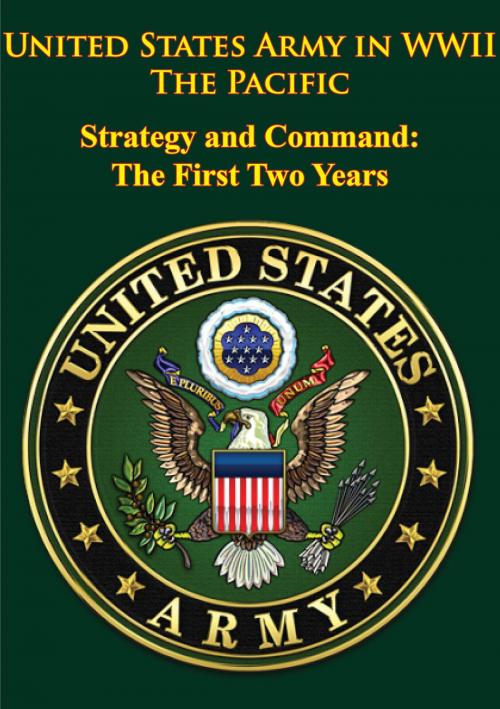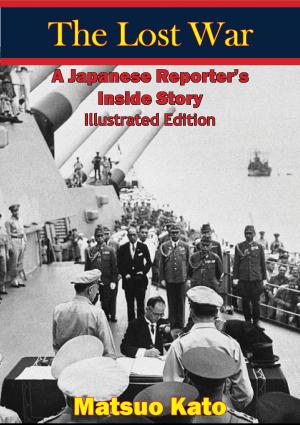United States Army in WWII - the Pacific - Strategy and Command: the First Two Years
[Illustrated Edition]
Nonfiction, History, Germany, European General, Military, United States| Author: | Professor Louis Morton | ISBN: | 9781782893974 |
| Publisher: | Verdun Press | Publication: | August 15, 2014 |
| Imprint: | Verdun Press | Language: | English |
| Author: | Professor Louis Morton |
| ISBN: | 9781782893974 |
| Publisher: | Verdun Press |
| Publication: | August 15, 2014 |
| Imprint: | Verdun Press |
| Language: | English |
With 13 tables, 16 charts, 17 maps, 8 diagrams & 92 illustrations]
Strategy is a many-sided word, connoting different things to different people. The author of any work on strategy, therefore, owes it to his reader to define at the outset his own conception of this ambiguous term...
In the present volume, the author has viewed strategy broadly, including within it not only the art of military command-the original meaning of the term-but all those activities associated with the preparation for and the conduct of war in the Pacific.
Viewed thus, the arena of Pacific strategy is the council chamber rather than the coral atoll; its weapons are not bombs and guns but the mountains of memoranda, messages, studies, and plans that poured forth from the deliberative bodies entrusted with the conduct of the war; its sound is not the clash of arms but the cool voice of reason or the heated words of debate thousands of miles from the scene of conflict...It deals with policy and grand strategy on the highest level-war aims, the choice of allies and theaters of operations, the distribution of forces and supplies, and the organization created to use them. On only a slightly lower level, it deals with more strictly military matters-with the choice of strategies, with planning and the selection of objectives, with the timing of operations, the movement of forces and, finally, their employment in battle.
Strategy in its larger sense is more than the handmaiden of war, it is an inherent element of statecraft, akin to policy, and encompasses preparations for war as well as the war itself. Thus, this volume treats the prewar period in some detail, not in any sense as introductory to the main theme but as an integral and important part of the story of Pacific strategy. The great lessons of war, it has been observed, are to be found in the events preceding the outbreak of hostilities. It is then that the great decisions are made and the nature of the war largely determined.
With 13 tables, 16 charts, 17 maps, 8 diagrams & 92 illustrations]
Strategy is a many-sided word, connoting different things to different people. The author of any work on strategy, therefore, owes it to his reader to define at the outset his own conception of this ambiguous term...
In the present volume, the author has viewed strategy broadly, including within it not only the art of military command-the original meaning of the term-but all those activities associated with the preparation for and the conduct of war in the Pacific.
Viewed thus, the arena of Pacific strategy is the council chamber rather than the coral atoll; its weapons are not bombs and guns but the mountains of memoranda, messages, studies, and plans that poured forth from the deliberative bodies entrusted with the conduct of the war; its sound is not the clash of arms but the cool voice of reason or the heated words of debate thousands of miles from the scene of conflict...It deals with policy and grand strategy on the highest level-war aims, the choice of allies and theaters of operations, the distribution of forces and supplies, and the organization created to use them. On only a slightly lower level, it deals with more strictly military matters-with the choice of strategies, with planning and the selection of objectives, with the timing of operations, the movement of forces and, finally, their employment in battle.
Strategy in its larger sense is more than the handmaiden of war, it is an inherent element of statecraft, akin to policy, and encompasses preparations for war as well as the war itself. Thus, this volume treats the prewar period in some detail, not in any sense as introductory to the main theme but as an integral and important part of the story of Pacific strategy. The great lessons of war, it has been observed, are to be found in the events preceding the outbreak of hostilities. It is then that the great decisions are made and the nature of the war largely determined.

![Cover of the book Marines In World War II - Bougainville And The Northern Solomons [Illustrated Edition] by Professor Louis Morton](https://www.kuoky.com/images/2014/august/300x300/9781782892786-VZXx_300x.jpg)

![Cover of the book The Fifth Army In March 1918 [Illustrated Edition] by Professor Louis Morton](https://www.kuoky.com/images/2014/august/300x300/9781782894834-9qa1_300x.jpg)

![Cover of the book Desert Warfare: German Experiences In World War II [Illustrated Edition] by Professor Louis Morton](https://www.kuoky.com/images/2014/august/300x300/9781782893776-MTwr_300x.jpg)



![Cover of the book August Storm: The Soviet 1945 Strategic Offensive In Manchuria [Illustrated Edition] by Professor Louis Morton](https://www.kuoky.com/images/2015/november/300x300/9781786250421-4LMz_300x.jpg)





